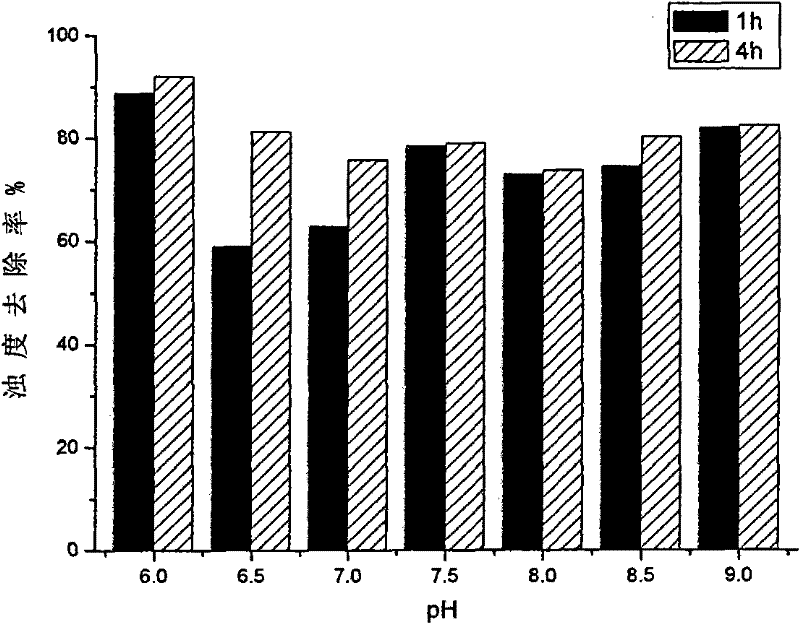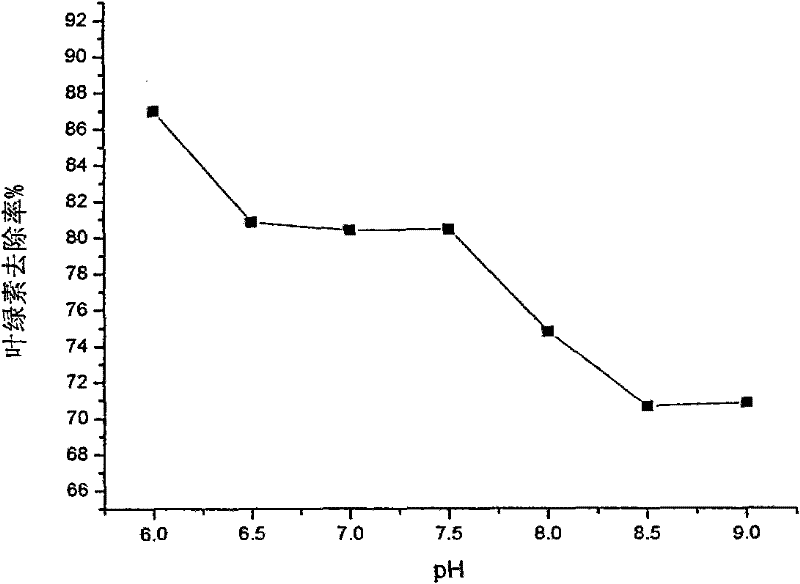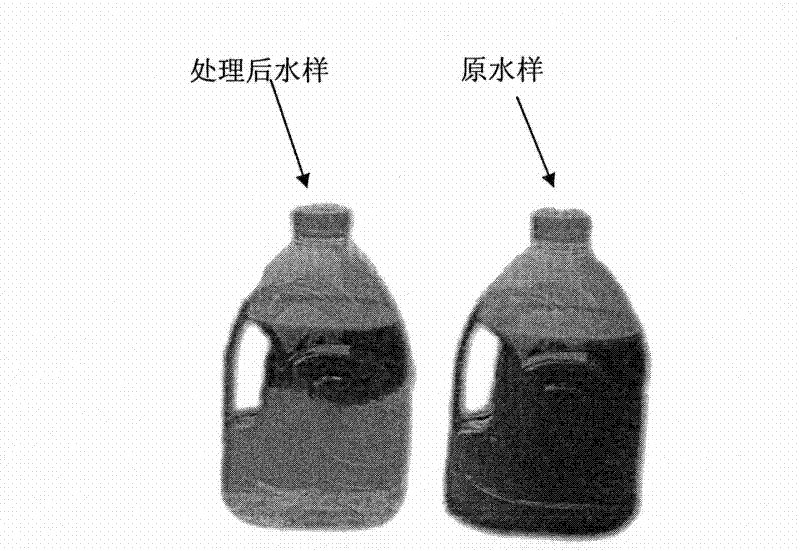Algae-controlling laterite compound flocculant as well as preparation method and applications thereof
A composite flocculant and laterite technology, used in flocculation/sedimentation water/sewage treatment, etc., can solve the problems of high cost, slow effect, small area of water area, etc., and achieve fast settlement speed, quick effect, convenient transportation and storage. Effect
- Summary
- Abstract
- Description
- Claims
- Application Information
AI Technical Summary
Problems solved by technology
Method used
Image
Examples
Embodiment 1
[0031] (1) The soil sample collection site is located in the Huguangyan area of Zhanjiang City, West Guangdong Province. Take layered mining to take lateritic soil samples, according to literature (Xu Jinhong, Xu Ruisong, Xia Bin, Miao Li, Zhu Zhaoyu. "Content and distribution characteristics of rare earth elements in Guangdong red soil", China Soil and Fertilizer, 2007 (1): 18- 21), it can be seen that this laterite contains the following components in percentage: SiO 2 36.27~72.91%, Al 2 o 3 9.19~28.37%, Fe 2 o 3 4.4~15.66%, FeO 0.04~0.09%, MnO 0.03~0.22%, CaO 0.06~1.0%, MgO 0.07~0.36%, K 2 O 0.47~0.62%, Na 2 O 0.09~1.4%, P 2 o 5 0.04~0.17%; the laterite soil sample is air-dried or oven-dried, crushed, and passed through a 20-mesh sieve to obtain laterite powder;
[0032] (2) Add 100g of laterite powder, 12g of polyaluminum chloride and 10g of ferric trichloride into a ball mill, and continue grinding for 5 hours at a speed of 450r / min under normal temperature ...
Embodiment 2
[0044] The source of the water sample is the same as in Example 1, and the measured turbidity in the water sample is 15.07 NTU, and the content of chlorophyll a is 153.34 μg / L. Get a certain amount of laterite powder prepared by step (1) of Example 1 and join in 1L water sample, then add 60mg polyaluminum chloride and 50mg ferric chloride respectively, after stirring and settling, measure the content of turbidity and chlorophyll a removal rate.
[0045] a) Add 200mg of laterite powder, 60mg of polyaluminum chloride and 50mg of ferric chloride into 1L of water sample, stir on a magnetic stirrer for 3min, and then let it settle. After 1h, the supernatant of the water sample was taken to measure the turbidity. Compared with the turbidity of the original water sample, the turbidity removal rate of 1h was 80.55%, and the turbidity removal rate of 4h was 88.59%. After extracting chlorophyll with a chlorophyll suction filter pump, extract with 9:1 acetone solution for 24 hours, meas...
Embodiment 3
[0053] The source of the water sample is the same as in Example 1. The measured turbidity in the water sample was 16.51NTU, and the chlorophyll a content was 161.62μg / L. The laterite composite flocculant prepared in Example 1 was added to 1L of water sample, and after stirring and settling, the turbidity and the removal rate of chlorophyll a were measured.
[0054] a) Add 120mg of laterite composite flocculant (including 98.36mg of soil sample, 11.80mg of polyaluminum chloride, and 9.84mg of ferric chloride) to 1L of water sample, stir on a magnetic stirrer for 3 minutes, and then let it settle. After 1h, the supernatant of the water sample was taken to measure the turbidity. Compared with the turbidity of the original water sample, the turbidity removal rate of 1h was 74.09%, and the turbidity removal rate of 4h was 84.55%. After extracting chlorophyll with a chlorophyll suction filter pump, extract with 9:1 acetone solution for 24 hours, measure the content of chlorophyll a...
PUM
 Login to View More
Login to View More Abstract
Description
Claims
Application Information
 Login to View More
Login to View More - R&D
- Intellectual Property
- Life Sciences
- Materials
- Tech Scout
- Unparalleled Data Quality
- Higher Quality Content
- 60% Fewer Hallucinations
Browse by: Latest US Patents, China's latest patents, Technical Efficacy Thesaurus, Application Domain, Technology Topic, Popular Technical Reports.
© 2025 PatSnap. All rights reserved.Legal|Privacy policy|Modern Slavery Act Transparency Statement|Sitemap|About US| Contact US: help@patsnap.com



